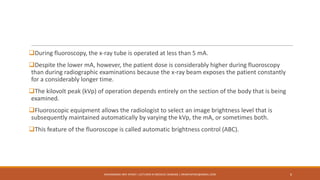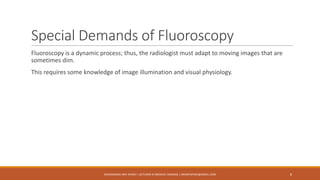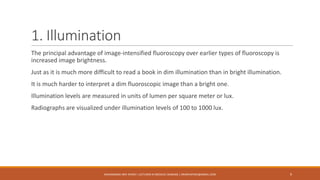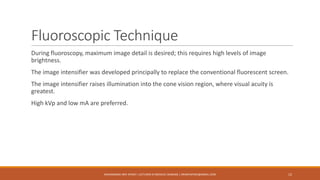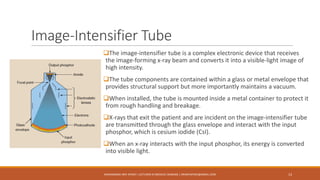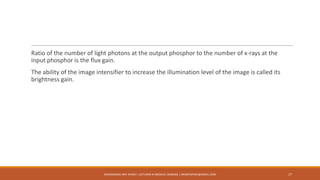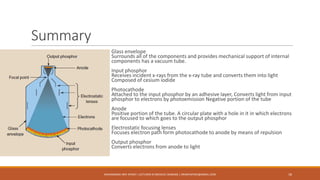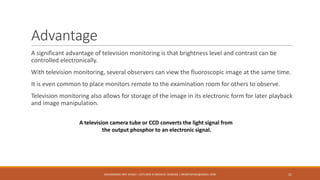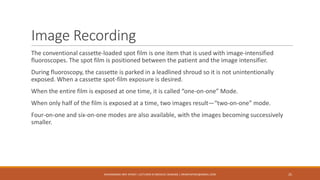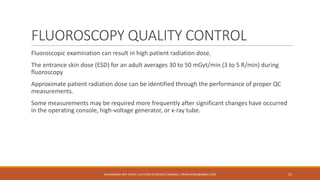The document provides an overview of fluoroscopy, emphasizing its use for real-time imaging of internal structures, particularly in dynamic studies like angiography. It explains the composition of fluoroscopic systems, including the function of image intensifiers in enhancing image brightness and detail while managing patient radiation dose. Additionally, it covers the role of television monitoring in fluoroscopy, allowing for electronic image manipulation and remote viewing.





